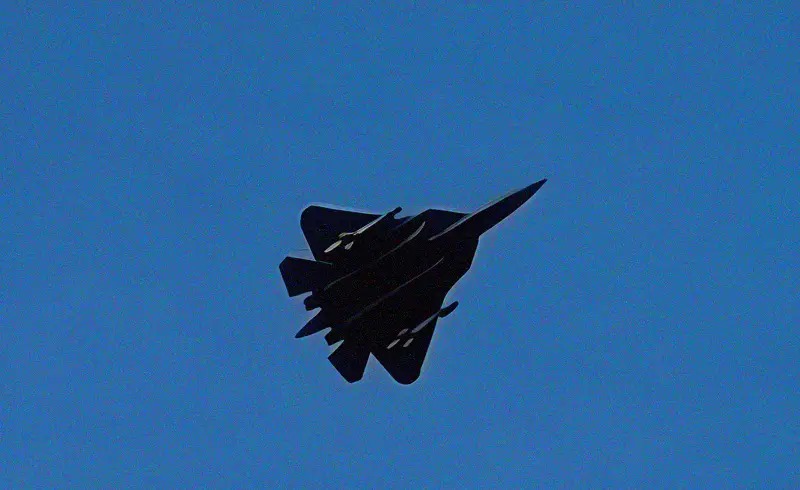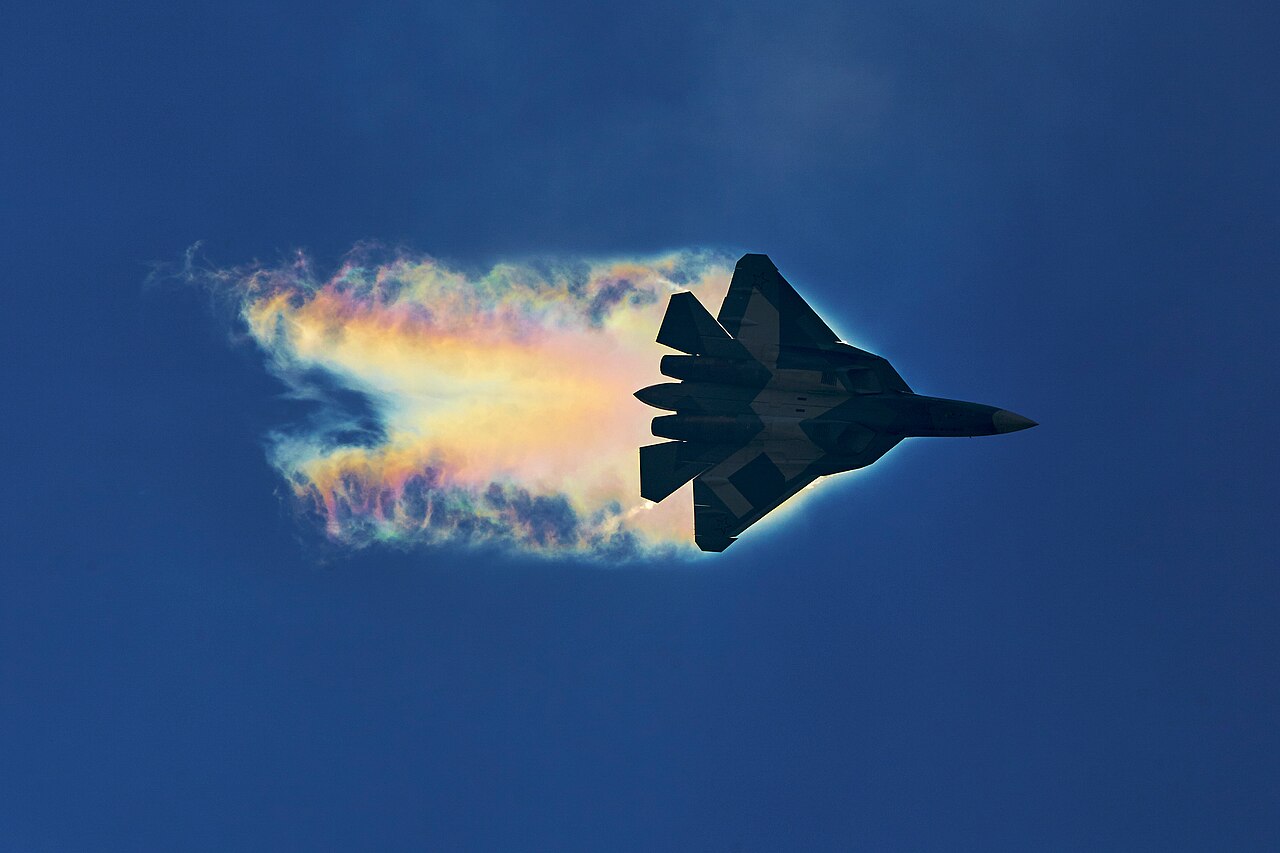Footage posted on social media on October 19 showing a Russian Su-57 stealth fighter carrying two Kh-59M2 missiles externally has evoked many comments and discussions.
Stealth fighters are designed to carry their weapons load internally because external carriage on pylons dramatically increases the fighter’s radar cross section (RCS).
So the question is – Why would a stealth fighter be armed with external stores, absolutely compromising its stealth? Why wasn’t the fighter carrying the two missiles internally?
A straight and somewhat cheeky answer to the question would be: because the Kh-59M2 missile is not designed for internal carriage. It would not fit into the Su-57’s internal bomb bay! There is a variant of the Kh-59M2 called Kh-59Mk2, which is designed and sized for internal carriage by the Su-57.
As cheeky as it may sound, the answer is intended to provide a perspective. Weapon stores are customized for internal or external carriage and are not swappable.
An important point to keep in mind is – stealth fighters do have external hardpoints, because sometimes there can be an operational imperative to carry external stores.
External carriage makes more operational sense when a stealth fighter is operating in uncontested airspace – where the adversary has no radars, fighters, or missiles in range. In such an operational environment, a stealth fighter would be more lethal carrying external stores rather than internal stores.

Increased Lethality Of External Stores
Internally carried weapons are generally smaller in size than externally carried weapons. Adapting weapons that were designed to be carried externally for internal carriage often involves downsizing the weapon, which can result in a smaller warhead weight.
It’s likely that the Kh-59Mk2 features a lighter warhead and is, hence, less lethal.
The Kh-59Mk2 is not only sized for internal carriage but it is also shaped for low radar observability. It makes sense for a stealth fighter to launch missiles and glide bombs that are also stealthy.
The release of a non-stealthy weapon from a stealth fighter could well reveal the location of the stealth fighter. Also, the use of non-stealthy missiles and glide bombs would negate some of the benefits accruing from penetrating contested airspace undetected for weapon launch.
Stealth shaping (boxy design, etc.) of a weapon can further exacerbate the dimensional penalty accruing from the internal carriage, forcing a further reduction in warhead size.
Greater Cost Of Stealthy Weapons
Because of its stealth shaping and use of specialized materials to reduce radar signature, the Kh-59Mk2 is likely far more expensive than the Kh-59M2. So, carrying a Kh-59Mk2 externally on the Su-57 would be wasteful.
Limited Inventory
So far, we have seen two imperatives for external weapon carriage when a stealth fighter is operating in uncontested airspace: Lower cost and greater lethality.
Another reason could be the limited inventory of weapons available for internal carriage. Low-observable missiles and glide bombs are relatively new, particularly in Russia, which has struggled with the development of the Su-57 because of Western sanctions.
The Su-57 first flew in 2010, but serious development of weapons honed for internal carriage likely gained pace just four to five years back.
The Kh-59Mk2 is a recently developed missile. The number of missiles in the Russian inventory is likely small. In contrast, the inventory of Kh-59M2 missiles is not only large but rapidly heading towards obsolescence with the induction of the Kh-59Mk2.

Obfuscating Stealth Signature
Coming to something obvious but hardly discussed, stealth fighters deliberately increase their stealth signature when not undertaking combat missions to obfuscate their actual signature on operational missions. This makes software-based recognition of the operational signature difficult.
While the primary objective of stealth technology is to minimize a fighter’s RCS, stealth fighters might increase their signature temporarily to deceive enemy radars.
Stealth fighters use stealth shaping, such as angled surfaces to deflect radar waves and radar-absorbing material to absorb radar waves.
However, they feature onboard systems that allow them to selectively change or control their RCS by altering the way radar energy interacts with the aircraft. For example, they may deploy certain surfaces or flaps to increase reflectivity.
Signature enhancement is routinely used when stealth fighters fly escort missions close to adversary airspace. The radar signature of a stealth fighter flying in international airspace will never match the radar signature of a stealth fighter inbound to obliterate you!
The Su-57 has been participating in the Russian Special Military Operation (SMO) in Ukraine since its very beginning. There have been several instances of Kh-59Mk2 missile strikes on Ukrainian targets attributed to Su-57.
According to Russian social media, the TV tower in Kharkiv and a military facility in the Nikolaev region were destroyed by Su-57 aircraft using the Kh59Mk2.
Besides penetrating Ukrainian airspace in full stealth mode to deliver missile strikes, Russian aerospace forces also use the Su-57 for networking support.
In July, the UAC told TASS that the Su-57 is part of the central combat link of the SMO along with the Su-34 and Su-35. The joint use of these three types of aircraft facilitates a comprehensive response to emerging threats. Such a role would not require the Su-57 to enter contested airspace.
It’s likely that when operating out of contested airspace, the Su-57 deliberately obfuscates its radar signature by carrying external stores. These stores can also be used to attack any targets of opportunity close to the battlefront.
The RCS of a Su-57 armed with externally carried Kh-59M2 missiles would confuse Ukrainian ground radars and US/NATO airborne radars on AWACS aircraft. It would be very different from the RCS and signature of a Su-57 armed with internally carried Kh-59Mk2 missiles.
- Vijainder K Thakur is a retired IAF Jaguar pilot, author, software architect, entrepreneur, and military analyst.
- VIEWS PERSONAL OF THE AUTHOR
- Follow the author @vkthakur




